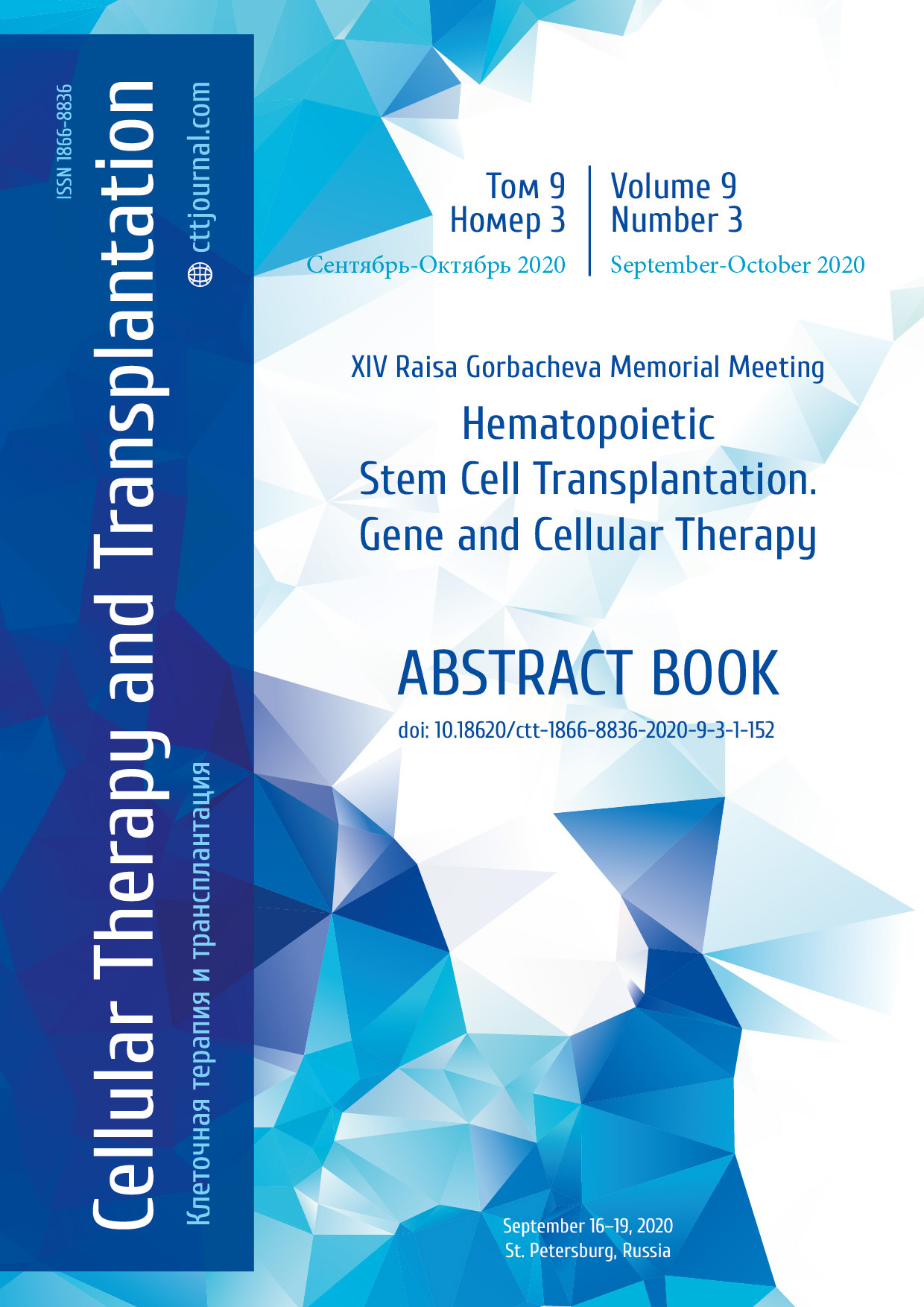CM-05. Treatment efficiency in multiple myeloma combined with bone and/or extramedullary plasmacytomas
Valentina V. Porunova, Olga V. Pirogova, Olga V. Kudyasheva, Elena I. Darskaya, Ilya Yu. Nikolaev, Boris V. Afanasyev
RM Gorbacheva Research Institute of Pediatric Oncology, Hematology and Transplantation, Pavlov University, St. Petersburg, Russia
Contact: Dr. Valentina V. Porunova, e-mail: porunovavv@gmail.com
Summary
Introduction
At the present time, multiple myeloma still remains an incurable disease. In some patients, bone and extramedullary plasmacytomas are revealed at the beginning of the disease. We aimed to summarize the experience of RM Gorbacheva Research Institute in the treatment of these patients.
Patients and methods
We have analyzed 221 cases of multiple myeloma patients subjected to autologous bone marrow transplantation (auto-BMT). In 71 cases (32%) aged 24 to 68 years, the disease progressed with bone and/or extramedullary plasmacytomas. In 23% of the patients, this diagnosis was histologically confirmed, in other cases, it was made by imaging methods (CT, MRI, PET-CT). In 86% of patients, plasmacytomas were detected at the onset of the disease, in 14% in relapse. Localization of bone plasmacytomas was as follows: 57%, vertebrae; 33%, ribs; 6%, pelvic bones; 4%, other sites.
A combination of bone and extramedullary plasmacytes was revealed in 4% of patients. In 46% of patients, more than one plasmacytoma was detected. In relapse, extramedullary lesions were more common: soft tissue affection, 80%; brain lesions, 20%.
Results
37% of the patients with plasmacytomas received the combined treatment: 23% surgical treatment (removal, resection); 14%, radiation therapy to the plasmacytoma area (total dose of 30 Gy). The other patients received only induction chemotherapy and auto-BMT. Clinical response was evaluated in 75% of patients by the imaging methods (CT, PET-CT). A complete absence of plasmacytomas after treatment was observed in 27%, partial response was noted in 1%. Reduction of plasmacytoma size by <50% was found in 46% of the patients. Relapse of plasmocytomas in the same, or new areas was observed in 11% of the cases. There were no significant differences in 5-year overall survival in patients without plasmacytomas versus with them (respectively, 87.3% versus 80.3%, p=0.054). The following significant differences in progression-free survival were observed: 64% for plasmacytoma-free group, 55.7% for the group with plasmacytomas (p=0.026). When analyzing a group of patients with plasmacytomas, OS and PFS in patients with bone plasmacytomas were higher than in patients with extramedullary plasmacytomas: 86.4% versus 50% (p=0.002), and 61% against 27.3% (p=0.004), for OV and PFS, respectively.
Conclusion
Multiple myeloma, which presents with bone and extramedullary plasmacytomas, is more aggressive, exhibits worse overall and event-free survival rates, compared to the patients without plasmacytomas. Given the poor response of plasmocytomas to standard therapy regimens, including auto-BMT, it is necessary to use combination approaches in the treatment of patients with multiple myeloma and bone or extramedullary plasmacytomas.
Keywords
Аutologous bone marrow transplantation, multiple myeloma, plasmacytoma, bone, extramedullary.


